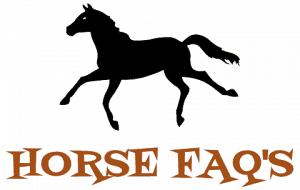Did you know that horses can distinguish up to 10 different voice commands? This ability underscores the significance of effective horse training in fostering a strong bond between rider and equine. Whether inspired by the exceptional partnership of Charlotte Dujardin and her horse Valegro at the London 2012 Olympics or looking to enhance both safety and pleasure, establishing basic commands is essential for any horse owner.
Training begins with simple commands such as “walk” and “whoa” and gradually progresses to “trot” and “back.” Success in equine obedience relies heavily on consistency, clear communication, and strategic animal behavior modification. Like obtaining horse rider insurance, mastering voice commands is a vital step toward a harmonious and safe riding experience.
Key Takeaways
- Basic voice commands like “walk” and “whoa” are crucial starting points.
- Progress gradually to advanced commands such as “trot” and “back.”
- Consistency and clarity in communication are essential for effective horse training.
- Positive reinforcement with rewards strengthens equine obedience.
- Integration of voice commands from groundwork to riding ensures seamless transitions.
Understanding Your Horse’s Nature and Communication
Recognizing and responding to your horse’s cues is essential for effective training. By understanding their natural instincts and body language, you can improve your communication and develop a stronger bond with your horse.
The Importance of Non-Verbal Cues
Horses are incredibly intuitive and rely heavily on non-verbal communication. Subtle changes in posture, tension, and facial expressions can signal your intentions to your horse, often more effectively than spoken words. Developing a keen awareness of these non-verbal cues aids in animal behavior modification, helping establish leadership with horses through trusted and consistent interactions.
Common Voice Commands to Use
Utilizing simple and clear voice commands is crucial for effective horse training. Here are some common voice commands used in horse training:
- “Whoa”: Used to stop the horse immediately.
- “Walk”: Indicates that the horse should start moving at a walk.
- “Trot”: Signals the horse to increase its pace to a trot.
- “Canter”: Directs the horse to move into a canter gait.
- “Back”: Used to ask the horse to move backward.
Incorporating these common voice commands consistently in your training sessions helps in reinforcing desired behaviors and establishing leadership with horses. Remember, consistency and clarity in delivering these commands will ensure your horse understands and responds appropriately, enhancing your overall training effectiveness.
Getting Started with Basic Training
Horse training begins with laying a strong foundation through groundwork exercises for horses. These initial steps are crucial in establishing consistency and a clear communication pathway between horse and handler.
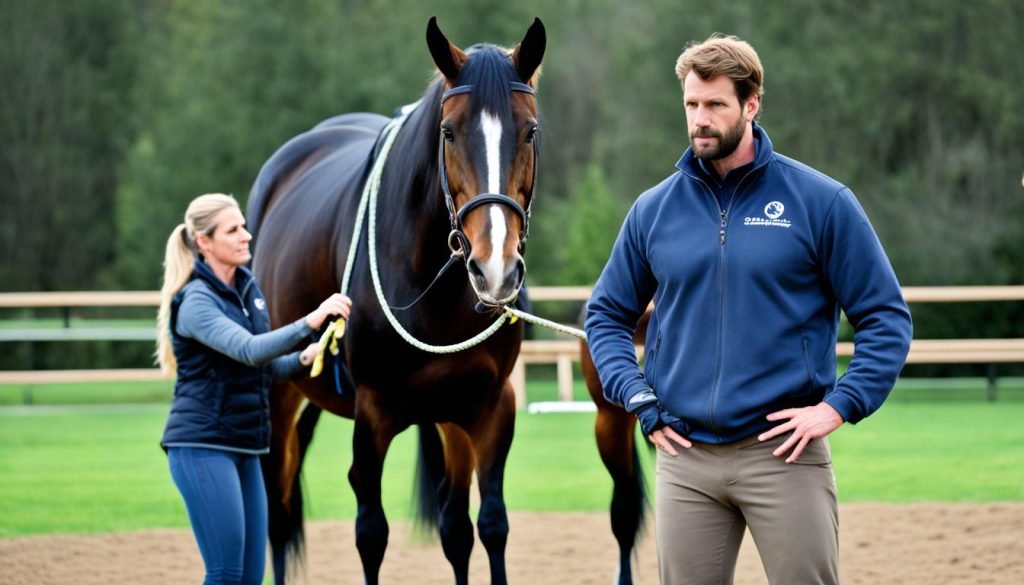
Importance of Groundwork
Groundwork forms the basis of all subsequent horse training. Engaging in groundwork exercises for horses like “whoa,” “walk on,” and “turn around” in places such as arenas or round pens offers a safe and structured environment for these activities. This phase helps reinforce obedience while setting clear expectations.
Building Trust with Your Horse
One of the key outcomes of groundwork is building a trusting relationship with your horse. Early and consistent horse training fosters mutual respect, where both the horse and the handler understand each other’s cues. This stage is vital for gaining the horse’s trust, which is essential for more advanced training.
Effective groundwork exercises for horses pave the way for smooth transitions to more complex commands and tasks. Establishing this trust lays the groundwork for a rewarding, long-term partnership between horse and rider.
Essential Voice Commands Every Horse Should Know
Key voice commands in horse training are crucial for achieving equine obedience and ensuring safety for both the horse and rider. Commands such as “whoa” for an immediate stop, “walk” to initiate movement, “trot” for a moderate increase in pace, and “back” for reversing direction are fundamental.
Reinforcement through repetition and reward, commonly known as positive reinforcement techniques, is a proven approach in teaching these essential commands. These techniques help in making the commands easily transferable to different handlers or riders. By maintaining consistency in the delivery of voice commands and accompanying them with corresponding physical cues when needed, a well-trained horse that is responsive to basic, yet essential, commands can be achieved.
- Whoa – Immediate stop
- Walk – Initiate movement
- Trot – Moderate increase in pace
- Back – Reverse direction
Employing these commands effectively ensures that training is not only successful but also creates a safe and manageable environment for both horse and handler. By consistently using positive reinforcement techniques, riders can establish a clear and reliable communication system, enhancing equine obedience and the overall training experience.
Using Positive Reinforcement Techniques
Positive reinforcement techniques enhance the training experience for both horse and handler, fostering a cooperative and constructive learning environment. By applying clicker training, horse trainers can significantly improve the pace at which horses learn and adhere to commands.
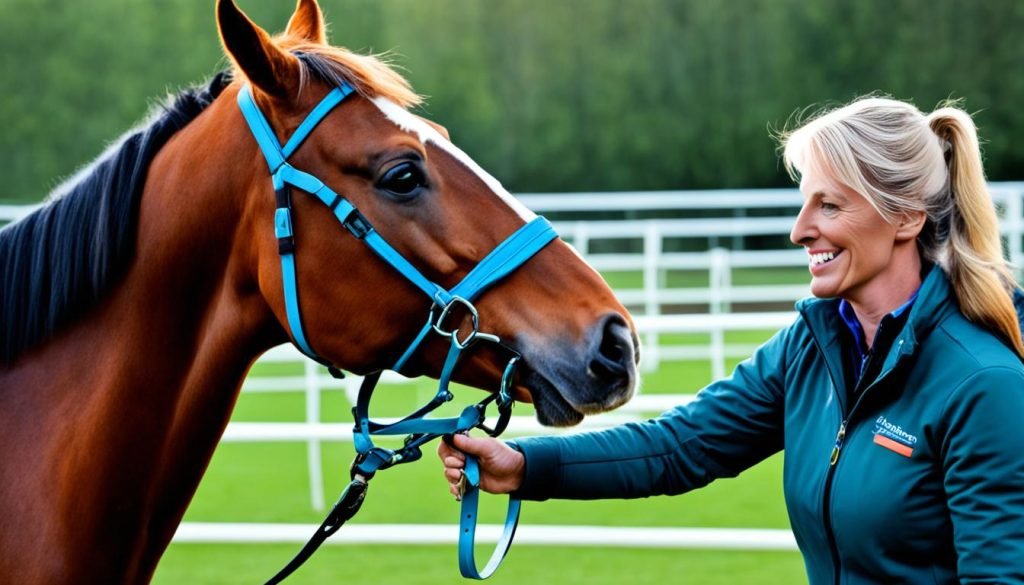
Clicker Training for Horses
Clicker training for horses involves using a small device that emits a clicking sound to mark desired behaviors. This immediate auditory cue, followed by a reward like a treat or verbal praise, helps horses understand which actions are being reinforced. The sound of the clicker becomes associated with positive outcomes, making horses more likely to repeat those actions. This technique is effective in teaching new commands and reinforcing good behavior.
Rewarding Desired Behaviors in Horses
Rewarding desired behaviors in horses is a crucial aspect of positive reinforcement techniques. When a horse completes a task correctly, providing instant rewards reinforces the behavior. Common rewards include treats, pats, or verbal affirmations. Consistency in delivering these rewards strengthens the learning process and solidifies the connection between the correct behavior and the positive outcome. Over time, horses begin to exhibit more of the desired behaviors, leading to a harmonious training relationship.
Introducing Advanced Commands and Transitions
Advancing from basic commands to more sophisticated directives opens a new chapter in equine obedience training. This progression involves familiarizing your horse with seamless transitions between various gaits, such as moving from a walk to trot and from trot to canter.
From Walk to Trot
The walk to trot transition is essential for enhancing your horse’s responsiveness. Begin by establishing a steady walking pace. As you prepare to cue the transition, use a distinct verbal command like “trot” combined with a gentle squeeze from your legs. Consistency in applying these cues helps the horse understand and predict the transition. Repetition and positive reinforcement are key as your horse learns to associate the cues with the desired change in gait.
Moving from Trot to Canter
Introducing advanced commands and transitions continues with learning the trot to canter transition. This requires precise timing and clear communication. Start by maintaining a controlled trot. Use a verbal cue like “canter” while simultaneously shifting your seat and applying pressure with your outside leg. This coordinated effort encourages the horse to change its stride smoothly. As with the walk to trot transition, consistent practice and appropriate rewards are crucial to mastering this advanced maneuver in equine obedience training.
Below is a detailed comparison of different cues and their effectiveness in equine gait transitions:
| Transition Type | Verbal Cue | Leg Pressure | Timing |
|---|---|---|---|
| Walk to Trot | “Trot” | Gentle Squeeze | Consistent |
| Trot to Canter | “Canter” | Outside Leg Pressure | Precise |
Dealing with Common Training Challenges
Horse training can be a journey filled with various obstacles. Dealing with common training challenges often starts with recognizing the root causes, which may stem from miscommunication or horse training difficulties unique to each animal. Patience, adaptability, and a strategic approach are crucial when facing these hurdles.
Inconsistencies in training routines can often lead to setbacks. A consistent horse training practice is vital to ensure progress. However, even the most disciplined training regimens can encounter resistance due to behavioral issues. This is where consulting a professional trainer may prove beneficial.
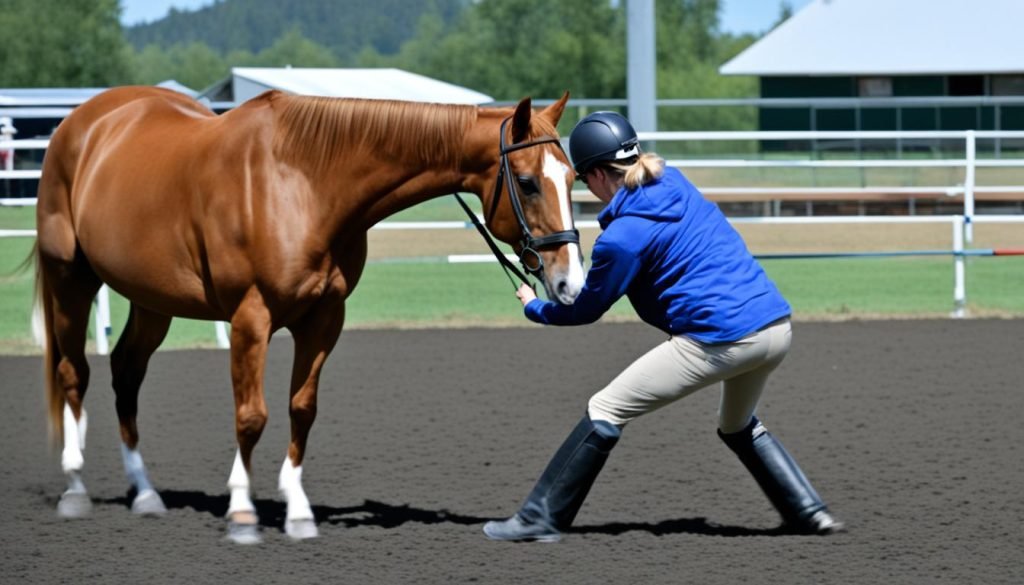
- Assess Your Techniques: Sometimes, revisiting and refining your methods can make a significant difference.
- Consult Professionals: Engaging with an experienced trainer can provide new perspectives and solutions.
- Stay Attuned: Always observe your horse’s cues. Misunderstood signals can escalate training difficulties.
Physical health often plays a pivotal role. Sometimes, horse training difficulties may be a manifestation of discomfort or pain. Regular health check-ups by equine health professionals can help identify and treat any underlying issues, ensuring your horse is fit for training.
Ultimately, dealing with common training challenges requires a combination of persistence, understanding, and the application of a consistent horse training practice. By addressing each challenge individually and embracing a patient approach, trainers can overcome obstacles and achieve lasting success.
Consistency and Patience in Training
For any horse training program, maintaining consistency and patience in training forms the backbone of success. Establishing a routine with the horse creates reliable patterns and sets clear expectations, enhancing the learning process. Patience allows trainers to accommodate the varied learning paces of different horses, ensuring no steps are rushed, which might lead to confusion or anxiety in the animal.
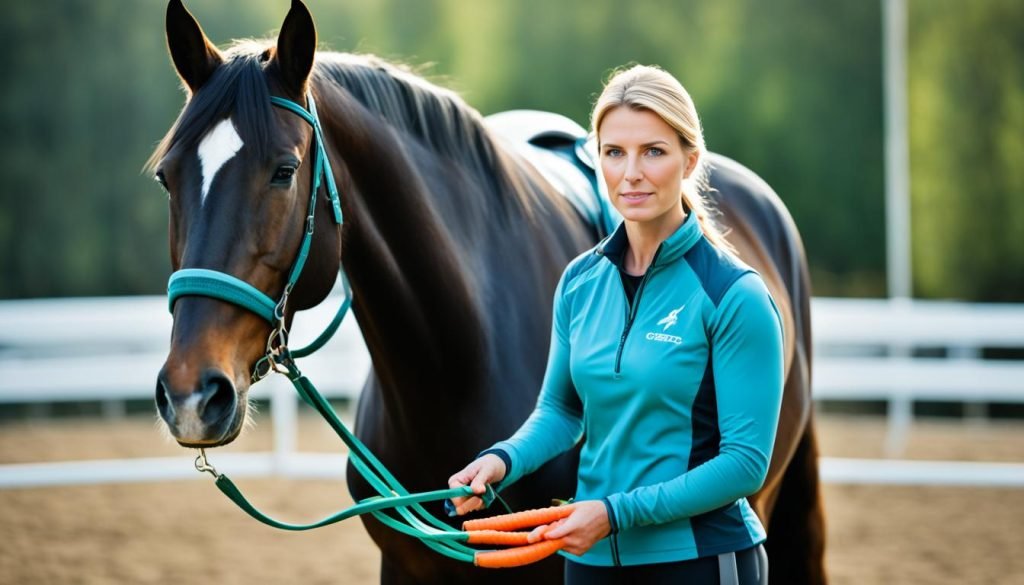
Importance of Consistent Commands
Consistent commands are crucial in establishing a coherent communication channel between the trainer and the horse. When commands remain consistent in both voice and action, horses are more likely to understand and respond appropriately. Consistency helps build trust and confidence in the horse, as it learns to anticipate and deliver the expected performance.
| Command | Action | Consistency Tip |
|---|---|---|
| “Walk” | Start Moving | Use the same tone every time. |
| “Whoa” | Stop | Ensure clear and firm delivery. |
| “Trot” | Increase Pace | Combine with physical cue if needed. |
| “Back” | Move Backward | Use steady, calm signals. |
Maintaining Patience Throughout the Process
Patience is equally essential in training as each horse learns at its own pace. Repetition and steady reinforcement aid in mastering new skills. It’s important to stay calm and composed, accommodating individual temperaments, and adjusting training techniques to fit the unique learning style of each horse.
By adopting patience and a methodical approach, trainers can effectively address and overcome training challenges. This dedication ultimately cultivates a trusted and well-trained horse, solidifying a robust rider-equine partnership that stands the test of time.
Conclusion
Concluding this comprehensive guide on successful horse training, it is essential to revisit the key elements that facilitate an effective training journey. Understanding your horse’s nature and communication forms the foundation of positive horse-rider relationships. Initiating training with solid groundwork establishes mutual trust and sets the stage for using consistent voice commands. These commands form the core of effective horse training strategies, promoting clear communication and obedience.
Employing positive reinforcement techniques, such as clicker training, further strengthens these fundamentals by rewarding desired behaviors, encouraging your horse to respond positively to commands. As you advance, introducing more sophisticated commands and transitions with patience will help your horse adapt and excel in these new challenges.
Facing and overcoming training challenges is part of this process, highlighting the importance of maintaining consistency in command delivery and practicing patience. Each horse learns at its own pace, and tailoring your approach to fit your horse’s unique temperament is essential. Through these methods, horse owners can build strong, trusting bonds with their horses, ensuring a well-adjusted and obedient companion ready for various equine activities.
FAQ
What are the fundamental commands to start with in horse training?
Start training your horse with basic commands such as “walk,” “whoa,” “trot,” and “back.” Consistency, clarity, and proper timing are essential when teaching these commands.
How important are non-verbal cues in horse training?
Non-verbal cues are crucial as horses are highly intuitive and sensitive to body language. They can effectively respond to changes in body movements and posture, making non-verbal communication a key component of training.
Why is groundwork important in horse training?
Groundwork forms the cornerstone of horse training, establishing obedience and fostering trust between the horse and handler. It sets the foundation for advanced training and helps in building a positive relationship.
How does positive reinforcement help in training horses?
Positive reinforcement techniques, such as using treats or praise, encourage desired behaviors in horses. Rewarding horses immediately after they perform the desired action helps reinforce learning and motivates them to repeat the behavior.
What is clicker training and how does it work for horses?
Clicker training involves using a clicker to mark a desired behavior, immediately followed by a reward. It encourages horses to associate the click sound with a positive outcome, making it an effective tool for reinforcing voice commands and desired behaviors.
How do you introduce advanced commands like transitioning from walk to trot?
Gradually increase the demands by first ensuring your horse is comfortable with the basic commands. Use clear, consistent voice commands and physical cues to guide the horse through the transition, and reinforce successful attempts with rewards.
What are the common challenges faced during horse training?
Common challenges include miscommunication, behavioral issues, and inconsistencies in training routines. Addressing these may require reassessing training techniques, maintaining patience, and ensuring the horse’s health to avoid physical discomfort affecting performance.
How can you ensure consistency in horse training?
Consistency in voice commands and timing helps establish reliable patterns and expectations for the horse. Regular practice and maintaining a routine are key to a successful training process.
Why is patience important in horse training?
Horses learn at different rates, and patience allows time for them to master new skills. Understanding each horse’s unique temperament and learning style, and celebrating small successes, contributes to a successful training journey.
